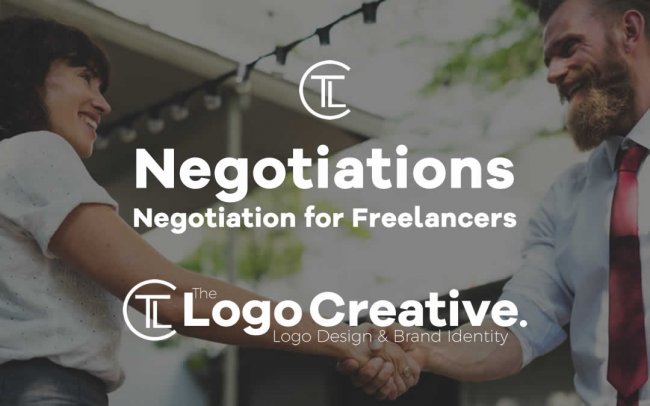When most people think of negotiation, they think of hostages and they start to get nervous. But the negotiation phase is a good thing. It means your potential customer is very interested in your services. It’s the last step in the sales process, matching their perceived value of what you do, to what they’re willing to pay.
Before negotiations begin
What most freelancers fail to realise is that negotiation begins way before you’re talking about prices.
Setting expectations from the start of the conversation and explaining your value properly lays the foundations for a good negotiation. If your client isn’t aware of how valuable your solution is how can you expect them to pay fairly for it? Focus on getting good at explaining the value you’re providing.
Base the price on the end result you’re delivering to your client. Margins are relatively high when selling your services based on time, and it’s easy to compare hourly prices to less experienced or less skilled peers, or even to themselves. Your client can justify paying for an end result easier than paying you a higher hourly rate than they get paid themselves. So frame your price around the project you’re delivering (or better, the problem you’re solving).
Remember that a good negotiation doesn’t have one winner, ideally, you’re looking for a win-win situation. There is more value in a relationship built on mutual comfort, especially when it comes to repeat work. Get creative about how you can make a deal better for your client, without changing the price or reducing the scope of work. For example, I’m a big fan of offering warranties for digital services (in case things go wrong).
Work out the amount you’re willing to walk away from, your minimum. And mentally prepare yourself to say no at anything lower. You can’t afford to do business by losing money unless you have no track record at all.
Let’s negotiate
You should always be aiming to negotiate. Haggling on price means you’re able to find the true value of your services to the customer. Which is why the age-old advice of going in high still stands true. Starting with a higher price than either your or the client is comfortable with is a good sign, and it allows you both some room to figure out the true value. If you don’t get pushback on price, you’ve basically left money behind — and that’s bad for business.
The key to negotiating is not to do it with prices. The price is the price, you don’t haggle at the supermarket, do you? People don’t haggle with lawyers or architects. Ignore the common advice of not naming a price first. You should already know how much your time is worth to them. If you ask the client to name a price, 99% of the time the client will answer “Well, I don’t know, you’re the expert!”. And they’d be right. Put the work in, to research and experiment with your pricing until you’re confident with it.
If you’re still experimenting with price, here’s an easy formula I used to apply:
Take your cost price and double it. If you don’t get challenged by your first customer, then double it again for the next. Keep doing it until you get some pushback. Now you’ve made room to figure out the sweet spot. At this point, don’t back down, or suck in your teeth like a cliche mechanic. Change the conversation…
Negotiation isn’t just about cost. If you need to reduce your price to fit a budget, work out a reduced scope of work to fit it. Negotiating on the amount of work involved keeps the integrity of your value intact. If they don’t have a budget but still insist on lowering the price, there is a strong chance that they’re negotiating around risk, not price. Work on ways to reduce the risk, such as breaking the work up into milestones, or offering to work a trial period. Learn to spot the motives behind why a client negotiates and you’ll be able to settle better mutual agreements.
If that fails, stop talking. Seriously, once you’ve named your price, stop selling. If a client asks for a lower price, try responding with, “That’s lower than I’d like.” and see what happens. Don’t make suggestions, don’t sell them on the work. Just be quiet and wait. This is the kind of thing you just have to try to see how powerful it can be in negotiating.
Finally, If you have a good reason to accommodate their reduction in price, you should have at least made some room in your margins to do so. Personally, I wouldn’t compromise on price once I was confident with it. But there’s always exceptions to the rule, such as wanting to work with this particular client, or the work that you do has a high chance of giving you more exposure/credentials.
In my experience, the freelancers that succeed are supremely confident in their pricing and are always prepared to walk away for anything less — so aim to get there. Holding onto these principals signals your value to clients and helps you grow a sustainable and respectable freelance business.




